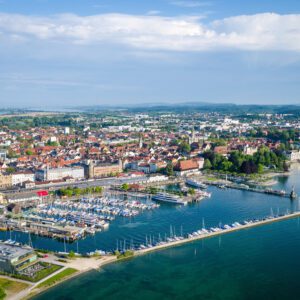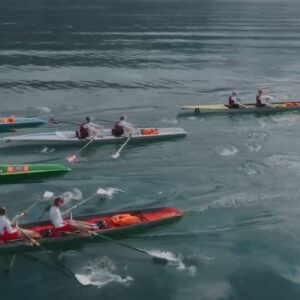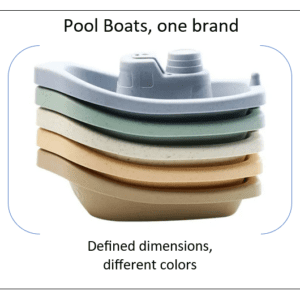Yes – the Coastal Rowing wave has also reached Japan as the Ashai Sumbum writes. More and more coastal rowers were found in Japan this year. The first coastal rowing competition in Japan was held in 2019 in Imabari, Ehime Prefecture, and the latest one in Gamagori was the fifth of its kind. So Coastal Rowing in Japan is picking up fast.

Beach sprint:.
“As soon as the riders sat in their seats and grabbed the oars, the craft were pushed forward toward the vast expanse of ocean.In the domestic beach sprint in the sport of coastal rowing, single- or double-seated boats slalom through three buoys arranged in a line up to 250 meters off the shore before returning to the beach. Because the craft navigate the heaving ocean backward, other team members on the beach gesture to show the direction to take while shouting, “the bow side,” to move the left arms more, and other instructions.
Whereas no spectators were on the site on Oct. 16 owing to the novel coronavirus pandemic, other contestants and the event’s staffers cheered on the beach, watching the boats competing with one another.
In traditional boat events, competitors sail on the unruffled river surface. But in coastal rowing, craft are bounced about by waves in the sea.
The audience burst into laughter on occasion, yelling, “Where are you going?” When one of the contestants passed by a buoy via the shortest possible route, the skillful maneuvering drew cries of “nice move” from other competitors and staffers. On returning to the beach, the rowers jumped out and raced to flags planted in the sand to finish the race just in front of their competitors amid wild applause from the event staff members. Following the race, the two teammates hugged each other in appreciation of their respective efforts.
The new sport of coastal rowing, which takes place around the seashore, is not widely known. But it is being considered for inclusion in the 2028 Los Angeles Olympics, and Japan has some promising competitors.As the state’s boating community has a far smaller membership and becomes even less competitive, coastal rowing is expected to provide a spark for water sports to regain their popularity.

On Oct. 16, Kurumi Sawada, 25, won the event on the shores of Gamagori in two categories. She competed in conventional boat races while in high school but started participating in beach sprints two or so years ago in the hopes of “enjoying the short-distance event.” Referring to her appearance in the world championships in Portugal in September as an example, Sawada explained the appeal of coastal rowing. “Music was played with excitement growing at the venue,” said Sawada. “Swimmers around there rooted for us.”
As competitors are driven by waves and winds in coastal rowing, the seawater feels heavy when rowing boats with oars. In addition to the ability to paddle, the skills to run on sandy beaches, climb on and off boats and slalom between buoys are also needed. “They (all those factors) are amusing because I can see how strong our bonds with teammates are,” said a smiling Sawada.
A representative of the Japan Rowing Association has high hopes for coastal rowing. “Food booths would line the site were it not for the coronavirus pandemic crisis,” said the official. “People may find the sport to be fun as part of the beach culture like in surfing.” ….

According to World Rowing and other sources, coastal rowing was broadly accepted as a sport during the 2000s, starting with a competition where 10 to 20 boats race through more than one set point along a course from 4 to 6 kilometers long. In 2007, the world championships was organized in France’s Cannes, and its shorter-distance beach sprint counterpart was held for the first time in China in 2019. It has been decided that coastal rowing will be part of the Dakar Youth Olympics scheduled for 2026 in Senegal.
Yosuke Yagi, 43, a member of the association’s coastal rowing committee, said the new variant may help the country’s boating community to regain its former glory.
“Japan is surrounded by waters,” said Yagi. “I expect it (coastal rowing) to provide an opportunity for more people to start the sport.”
The recent achievement of Japanese paddlers in the women’s junior double scull division in the global championships has given the plan a burst of momentum.
The pair of Sasa Yatsuzuka and Miyuki Yamashita, who are both in their second year at the Ehime Prefecture-run Imabari West High School, placed second in the competition in September.
“It was great for us to find hope that even Japanese can compete,” said Yatsuzuka. “I would like many people to learn coastal rowing.”








